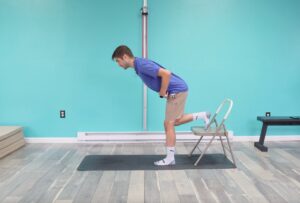Welcome back to our series on why running backs decline around age 28. If you’ve been following along, you know we’ve been breaking down the science behind why one of the most exciting positions in football has such a short shelf life. If you missed the earlier parts, we encourage you to go back here and catch up—you’ll get the full picture of how the body changes, step by step.
Lots of us ask the same question. Why running backs lose explosiveness. This week, we’re diving into two performance factors that don’t always make the highlight reel but drive every explosive cut, sprint, and stiff-arm: neuromuscular efficiency and rate of force development (RFD).
What Is Neuromuscular Efficiency
Neuromuscular efficiency is how well your brain and muscles work together. It’s your nervous system’s ability to recruit the right muscles, at the right time, with maximum coordination. Think of it as the “software” that makes your body’s “hardware” run at peak speed.
What is Rate of Force Development
Rate of force development (RFD) is about how quickly you can produce power. It’s not just the total strength you have—it’s how fast you can tap into it. RFD is what makes a running back hit the hole with burst, accelerate past linebackers, and deliver that crazy cutback that makes fans jump out of their seats.

The Two Working Together
Now here’s the connection: neuromuscular efficiency sets the bar, and RFD is the performance. If your nervous system isn’t firing cleanly, your muscles can’t generate force as fast. Together, they’re what create explosiveness—the magic that separates a good running back from a great one.
The hard truth? In the late 20s and early 30s, both neuromuscular efficiency and rate of force development start to decline. The nervous system loses some of its snap and muscle fibers don’t contract as quickly. Even if overall strength stays high, the ability to tap into that strength at game time begins to fade.
Why It Matters
For running backs, this makes or breaks their career. Their whole job is defined by their ability to hit gaps in milliseconds, make cuts at full speed, and break away before defenders can close. When neuromuscular efficiency and RFD slip the difference shows up on the field. That’s why many running backs look dominant at 25 but noticeably less explosive just a few years later.
Training
Some of this decline can be offset by specific targeted training. Things like powerlifting, plyometrics, and resistance sprints. These activities require your body to have a lot of force in a very short period of time. That being said, it can only do so much and for a certain amount of time until that biological clock catches up to them.
Watch Our Video For An Even More Detailed Breakdown!
So, while age 28 might not sound old in everyday life, for a running back’s neuromuscular system, it’s a key reason why running backs lose explosiveness. The decline isn’t about effort or toughness—it’s about the science of how the body changes with time. Stay tuned! Our next installment will be coming soon.
We've Got an MDRx For That
Struggling with tweaks and twinges but not full on pain? Maybe your tweaks are starting to get more regular.
Want our opinion? It’s better to take care of a twinge than a full blown problem. Get ahead of it.
We have a growing library of MDRx programs that will help your twinges fade away.
MDRx programs consist of 4 week training cycles that help improve the flexibility, stability, and strength of the joint you’re looking to bulletproof.
From sport specific to full body mobility, Mobility-Doc has you covered.
The best part? They’re 15-20 minute sessions you can do at home or in the gym. We don’t want to take away from your fitness. Let us help you support it.
Explore our MDRx Programs now





